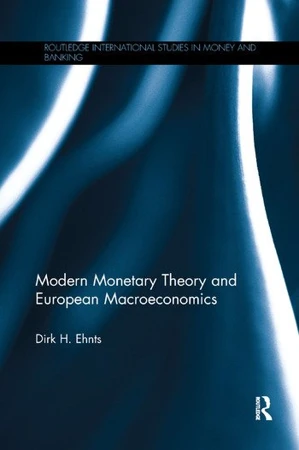Modern Monetary Theory and European Macroeconomics

Blurb
This book provides a new methodological approach to money and macroeconomics. Realizing that the abstract equilibrium models lacked descriptions of fundamental issues of a modern monetary economy, the focus of this book lies on the (stylized) balance sheets of the main actors. Money, after all, is born on the balance sheets of the central bank or commercial bank. While households and firms hold accounts at banks with deposits, banks hold an account at the central bank where deposits are called reserves. The book aims to explain how the two monetary circuits - central bank deposits and bank deposits - are intertwined. It is also shown how government spending injects money into the economy.
Modern Monetary Theory and European Macroeconomics covers both the general case and then the Eurozone specifically. A very simple macroeconomic model follows which explains the major accounting identities of macroeconomics. Using this new methodology, the Eurozone crisis is examined from a fresh perspective. It turns out that not government debt but the stagnation of private sector debt was the major economic problem and that cuts in government spending worsened the economic situation. The concluding chapters discuss what a solution to the current problems of the Eurozone must look like, with scenarios that examine a future with and without a euro.
This book provides a detailed balance sheet view of monetary and fiscal operations, with a focus on the Eurozone economy. Students, policy-makers and financial market actors will learn to assess the institutional processes that underpin a modern monetary economy, in times of boom and in times of bust.
Book summary
This book explains the creation and destruction of money in the Eurozone. It takes a close look at banks, the European Central Bank (ECB) and the German Ministry of Finance to explain how money is created through bank lending, central bank loans and government spending respectively. Money is subsequently destroyed when loans are repaid and taxes collected. The book examines the Eurozone from the perspective of the Modern Monetary Theory (MMT).
Comment from our editors:
My book is the only exposition of money creation by both banks and governments in the Eurozone. It would be nice to have an MMT category since there are many differences with Post-Keynesian thought. That does not imply that leading Post-Keynesians would not like our ideas or that MMT is not a Post-Keynesian spinoff.

